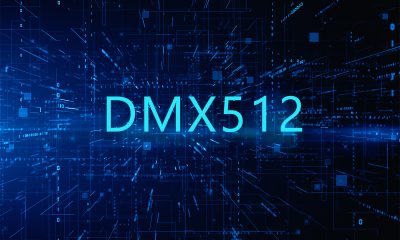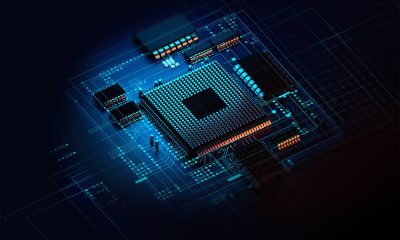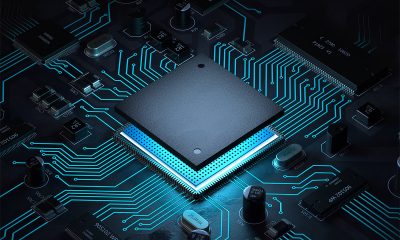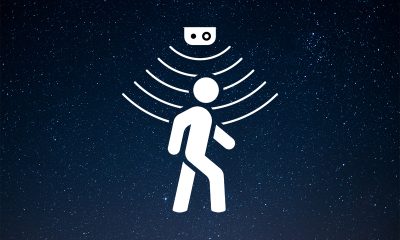General description
ZigBee lighting controls are systems, modules and devices that implement the ZigBee wireless communication protocol and act on the communicated information to operate the connected luminaires or lamps. At the most basic level, smart lighting is all about connectivity. ZigBee lighting controls transform lights into smart devices that can be remotely controlled, communicate with each other, and interact with other smart systems and networks via the Internet. With ZigBee network connectivity, intelligent lighting systems based on LED technology are able to participate in the Internet of Things (IoT). The intersection of IoT and LED lighting takes smart lighting to a new level and opens up a whole new world of possibilities. A Zigbee control solution is carried out through a combination of dedicated hardware and software. The hardware consists of a Zigbee radio and associated processor which may be integrated together in a single chip or mounted separately. The software is an application run on top of a Zigbee stack.
What is ZigBee
ZigBee is a wireless stack based on the IEEE 802.15.4 standard which defines the specifications for the physical (PHY) and Medium Access Control (MAC) layers of wireless networking, but it does not specify the remainder of the OSI protocol model. The ZigBee Alliance has added upper networking layers to complete what is called the ZigBee stack. The physical layer of the ZigBee protocol stack controls and communicates with the radio transceiver to manage modulation and demodulation operations. The MAC layer handles communication between the PHY layer and the NWK layer. It provides basic message handling, channel scanning and congestion control. The addition of network (NWK) and application (APL) layers on top of the IEEE 802.15.4 stack allows the protocol to deliver services such as routing and discovery as well as application specific services to user. The full-stack architecture provides a means to connect LED lights, sensors and switches into a robust, interoperable communication network without physical limitations imposed by wiring. Introduced by the ZigBee Alliance in 2004, ZigBee is one of the most widely deployed Wireless Personal Area Networks (WPAN) technologies in today’s smart homes and has established its foothold as well in building automation, process control, and industrial automation markets.
Network specifications
ZigBee is targeted at providing radio-frequency (RF) connectivity for applications that require a low cost, low data rate, long battery autonomy, secure and highly scalable networking. Operating in the Industrial, Scientific, and Medical (ISM) bands, the packet-based radio protocol supports three different frequencies, including 2.4 GHz, 915 MHz, and 868 MHz. Physical-level characteristics of the ZigBee network are determined by the IEEE 802.15.4 PHY layer specification. The throughput under the IEEE 802.15.4 standard is limited to 250 kbps, and the frame length is restricted to 127 bytes. The network nodes communicate up to a 75-meter range. In 802.15.4 terminology, network nodes that have the capability to perform all of the tasks required in a network are referred to as full-function devices (FFD), while nodes that are intended for very simple applications and only send/receive their own data are called reduced function devices (RFD) or end devices. ZigBee networks are designed to supports both FFD and RFD devices.
Network architecture
A ZigBee network consists of three types of devices: the coordinator, router, and end device. The Zigbee stack is formed around a central network coordinator which sets up the network, arranges the network topology, manages the network nodes, assigns the network addresses to the devices in its network, stores network node information, and routes messages throughout the network. ZigBee routers work with the central network coordinator to discover and maintain the routes in the network. A ZigBee router is an FFD and can also serve as end devices. While a router has full 802.15.4 functionality, the RFD carries a reduced feature set. An RFD end device neither participates in message routing nor maintains a broadcast transaction table (BTT). Since it only unicasts data to its parent, its memory size and processing capabilities are very limited. An RFD end device can be designed to spend most of their time in sleep mode. If a network incorporates sleeping ZigBee end devices, either the central coordinator or a ZigBee router needs to act as a primary discovery cache device to store node descriptors and power descriptors of the sleeping end devices.
FFDs can communicate directly with other FFDs or talk to RFDs, whereas RFDs can act only as leaf nodes to perform unicast communication because they lack the routing capability. These node characteristics imply that a ZigBee network can be designed to support various network topologies. A star network consists of a central coordinator which radially connects peripheral nodes. All peripheral nodes communicate only with the coordinator and do not talk to each other. Since FFDs can talk to other FFDs, they can enter a peer-to-peer communication relationship. FFDs, when used as ZigBee routers, form the branches of a peer-to-peer network. When they accept association from other devices in the network, a tree network takes shape. A tree network has a hierarchical topology. It contains leaf nodes which communicate only with one particular parent FFD nodes. The Zigbee PRO stack uses a source routing mechanism to handle link asymmetry. When a peer-to-peer network is made up of only FFDs and they are interconnected in a way that every node can connect to multiple other nodes, it grows into a mesh network.
Mesh networking
Mesh networking offers ZigBee networks real-world advantages for smart lighting and other IoT applications. The use of a mesh topology creates an autonomously administered ecosystem that is self-configuring, self-tuning, self-healing and self-monitoring. A fully decentralized architecture eliminates single points of failure because all nodes have redundant paths. Multi-hop communications between nodes allow traffic to move dynamically along the most reliable communication links and most cost-effective path. A ZigBee mesh can identify a broken node in the network and quickly reroute data packets to overcome communications interruption. The MAC layer provides association and disassociation services that allow devices to join or leave a network. Devices are logically related as soon as they become active. With mesh networking, over-the-air (OTA) firmware upgrades can be automatically distributed over the network. The hassle-free operation makes it possible to enhance features and security on a continuous basis. These self-managing capabilities lend mesh networks unmatched scalability, reliability and ease of operation. The self-forming characteristic permits great scalability. Making multiple “hops” between devices can extend end-to-end communication range far beyond the radio range of each individual node. A ZigBee network can scale up from a small system to a large network that accommodate up to 65,000 nodes.
Transmission modes
The ZigBee network layer supports broadcast, multicast, and unicast transmissions. These communication mechanisms can be implemented in a mesh network. This capability allows the mesh to maintain full compatibility, integrability and interoperability with external switching and routing protocols. The application layer, the top layer in the ZigBee protocol stack, is comprised of an application framework, an application support sublayer (APS), and a Zigbee device object (ZDO). An application framework provides the environment and platform where application objects are developed and hosted. Application objects are software programs used to control and manage the protocol layers in a ZigBee device. The ZigBee standard offers OEM vendors the option to use application profiles to create interoperable products. Zigbee 3.0 unites all of the different application profiles, among which include Zigbee Light Link (ZLL), into an all-encompassing application layer. A single ZigBee node supports up to 240 application objects. Each application object supports endpoints addressed between 1 and 240. The endpoint address of zero is reserved for the ZDO, a stack-level entity that provides an interface between the APS sublayer and the application framework. The APS sublayer offers a data service to both application objects and ZDOs while providing bind, AIB, and group management.
Radio transceiver
A ZigBee lighting control unit provides all stack functionality and the application-layer components needed to interface between the control backend and the LED system. Lighting control systems incorporate local intelligence and communication interfaces to implement the control and communication logic. A radio transceiver connects a microcontroller to a ZigBee network. IT typically includes a low noise amplifier (LNA), RF mixer, baseband filter, automatic gain controller (AGC), analog-to-digital converter (ADC), digital baseband. The received RF signal is amplified by the LNA, down-converted to a lower frequency by the mixer, and filtered to meet adjacent and alternate channels rejection specifications stipulated in the IEEE 802.15.4 standard. The AGC measures the received signal strength and adjusts the gain of the amplifying stages dynamically to maintain a suitable signal amplitude at its output that is to be delivered to the ADC block. The receiver digital baseband demodulates the digitized signal and extracts the binary information which is used the PHY protocol layer. An RF transmitter has a phase shift modulator (PSM) block which converts the stream of bits into modulated signals. The modulated signal is amplified by a power amplifier (PA) and then delivered to the antenna. The transmitted signal must deliver a power spectral density (PSD) that meets IEEE 802.15.4 criteria and be adjustable based on the distance between the network nodes. The radio interface also includes the antenna, frequency generator, sequence manager, and MAC accelerator (MACA).
Data processing
The radio interface is used in conjunction with a microcontroller unit (MCU) that provides data processing and storage capabilities. Some of the transceivers come with integrated microcontrollers. These packages are designed as system-on-chip (SoC) devices. In another approach, the RF transceiver is configured to work with an NCP (network coprocessor) which is hosted separately from the core stack components. An SoC device hosts the entire system (stack and application) and serves as a self-contained functional block that can perform all of the packet processing and applications processing tasks and also interacts with the application’s own microcontroller. In an NCP model, most stack functions are run on the radio and network processor chip. The application layer functionality is performed by a second processor which is the NCP. The core stack components communicate with the NCP typically using a serial interface such as Universal Asynchronous Receiver/Transmitter (UART) or Serial Peripheral Interface (SPI). In addition to the components aforementioned, a ZigBee lighting control unit also includes random-access memory (RAM), flash memory, a crystal oscillator, interrupts, input/output (I/O) ports, hardware peripherals, and ADCs (for sensor interfaces).



















Loading...